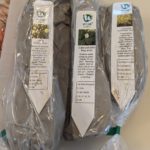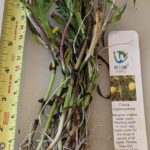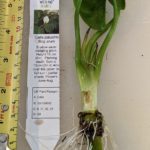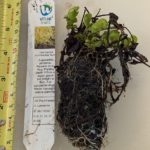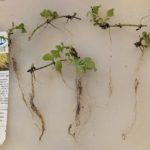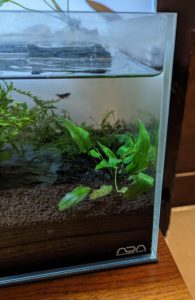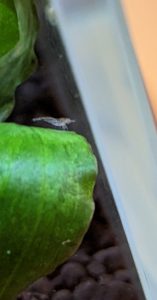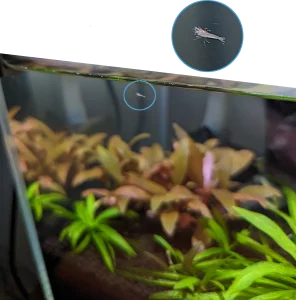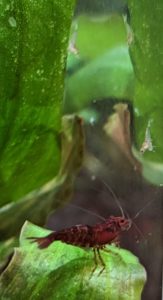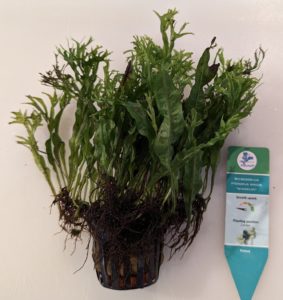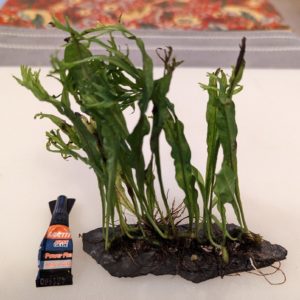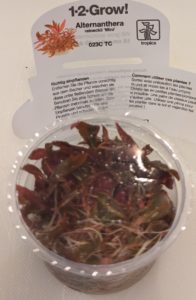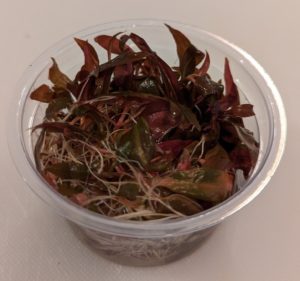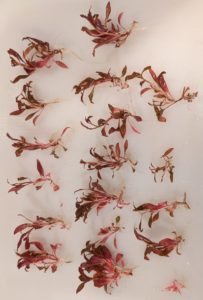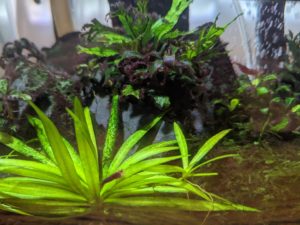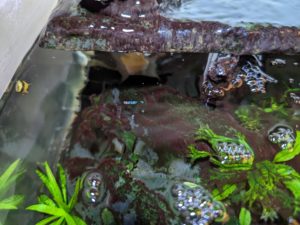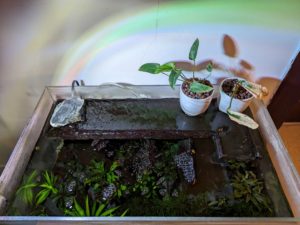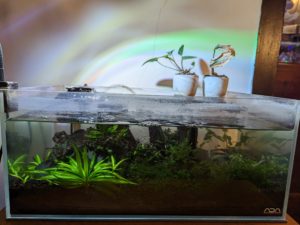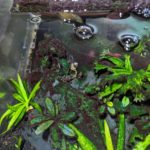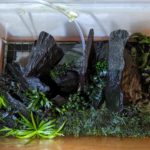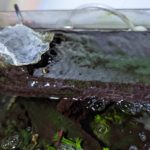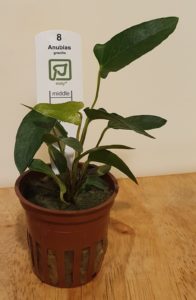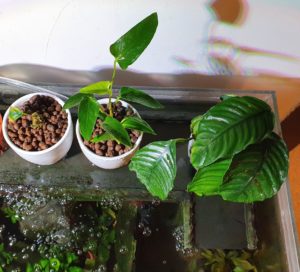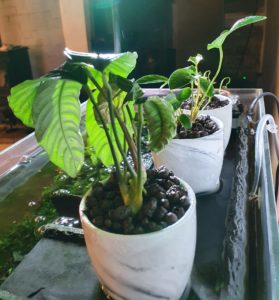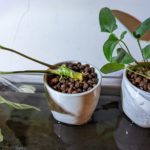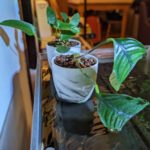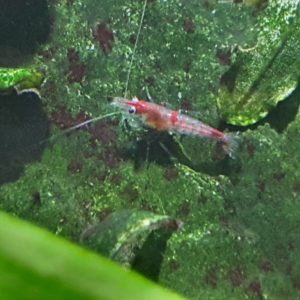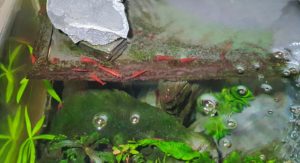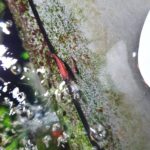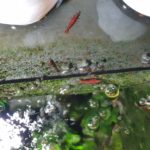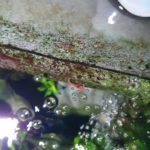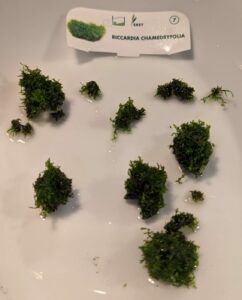
According to the British Bryological Society (naturally), Riccardia chamedryfolia, also known as ‘Jagged Germanderwort’ is a liverwort with a thalloid growth form and is naturally occurring in most parts of the world including commonly in the UK. There is a lot more biology-talk about liverworts vs. mosses vs. hornworts that I don’t understand, but I did manage to pick up an in vitro pot grown by Dennerle from Aquarium Gardens and thought I’d give it a try growing on hardscape. The secret hope is always to find something that will be able to grow in the Shrimphaus river even though many, many plants have failed there. It turns out that always wet with flowing water slate chippings exposed to typically low humidity indoor air is a quite austere environment. Still, hope springs eternal and I thought I could try out both the Shrimphaus river and also that wedged into cracks of the Fireplace Aquarium mountain would make a nice effect.
